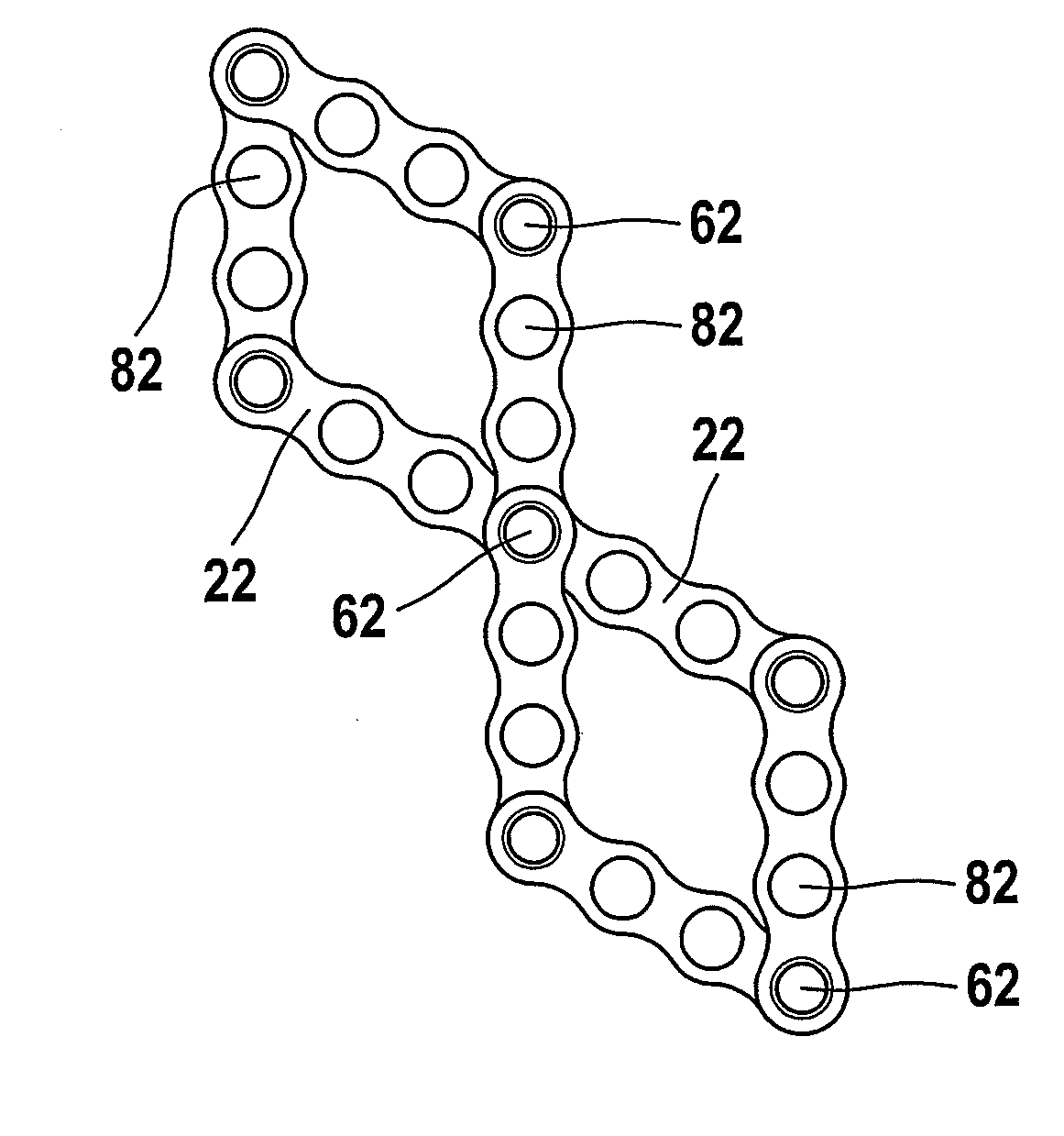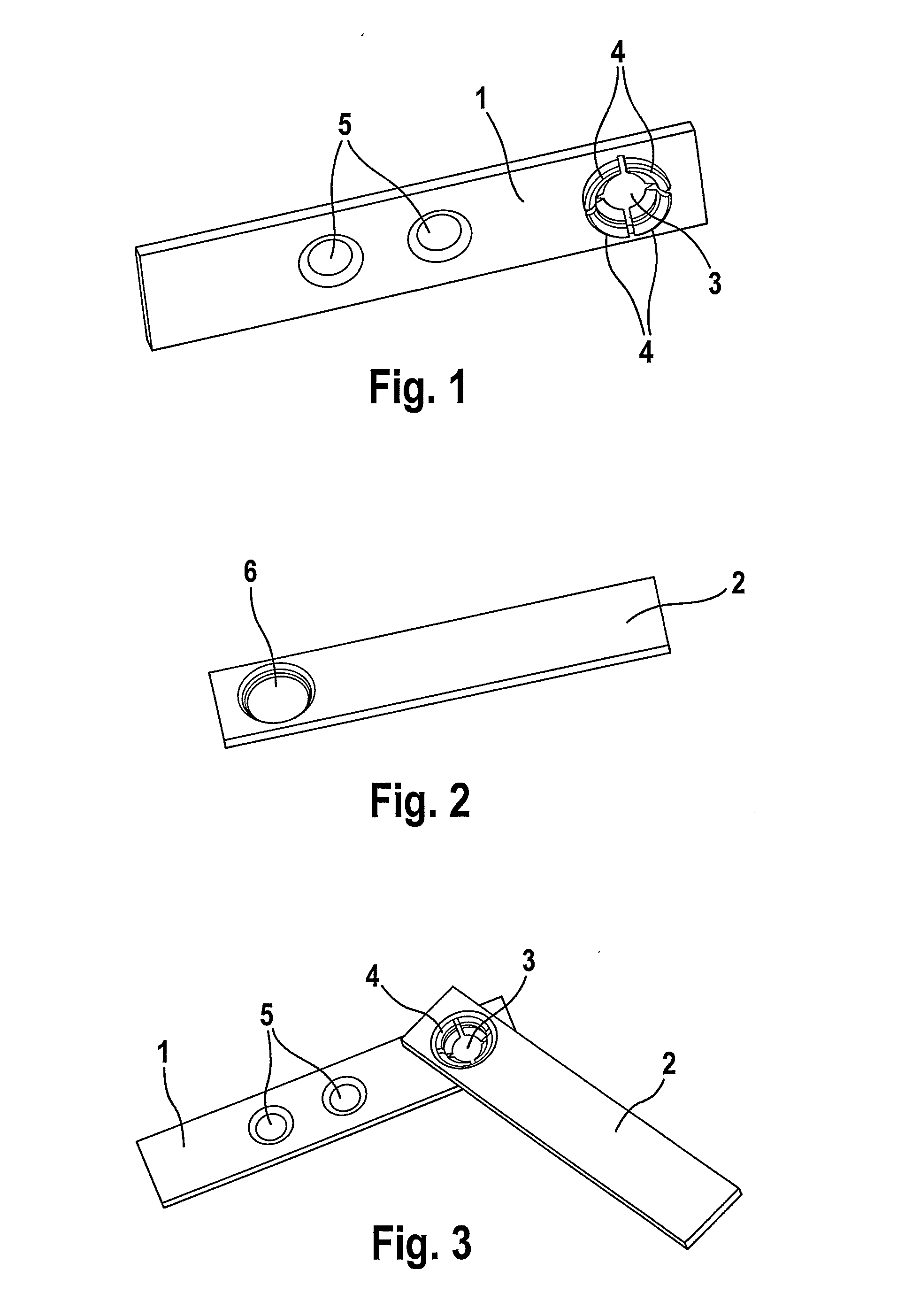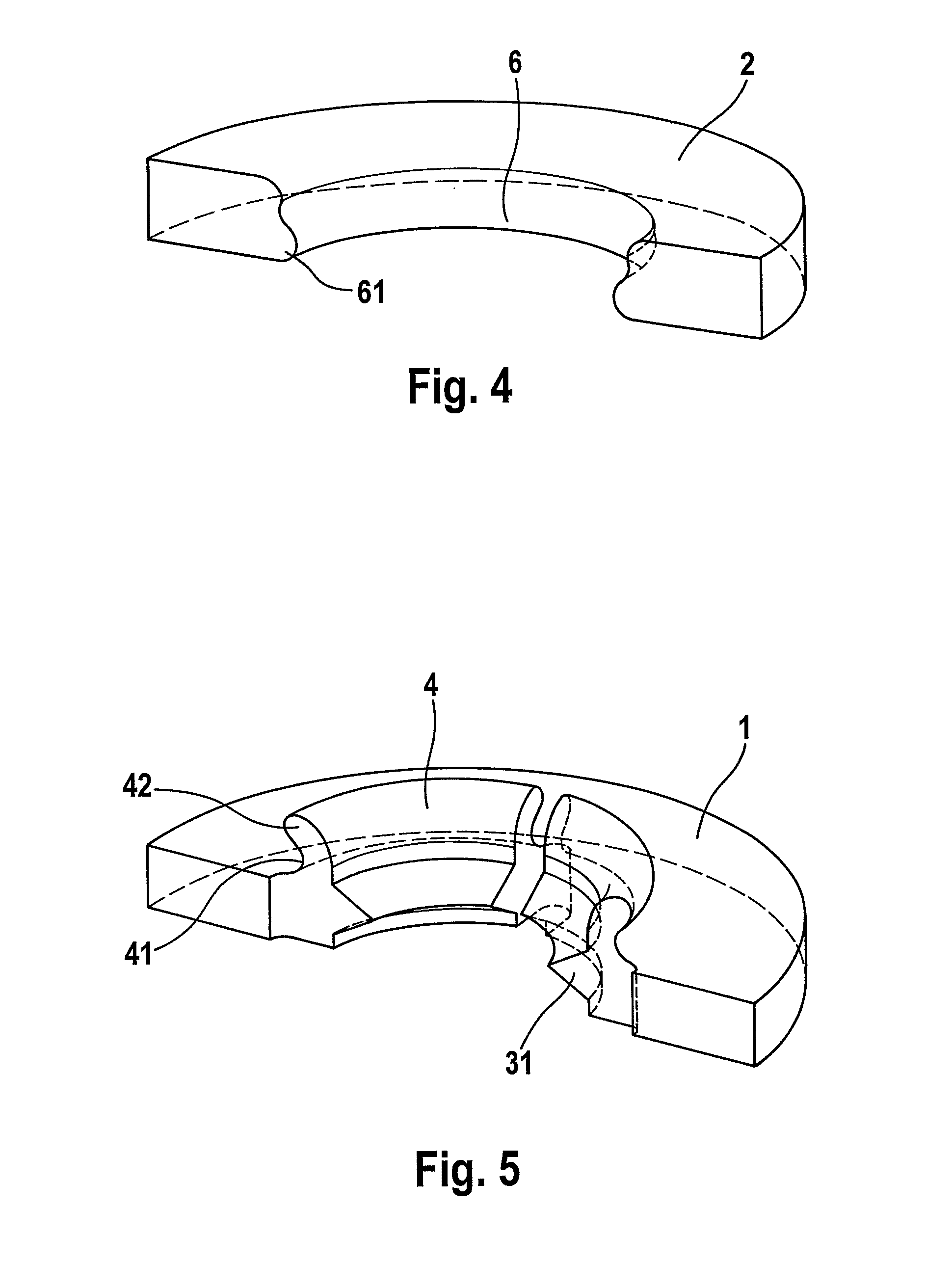Repositioning and fixation system for bone fragments
a fixation system and bone fragment technology, applied in the field of repositioning and fixation system, can solve the problems of difficult to fix the bone fragments in the final position and inability to move the bone plates relative to each other, and achieve the effect of widening the distance and widening the width
- Summary
- Abstract
- Description
- Claims
- Application Information
AI Technical Summary
Benefits of technology
Problems solved by technology
Method used
Image
Examples
Embodiment Construction
[0038]The repositioning and fixation system comprises a first bone plate 1 (FIG. 1) and a second bone plate 2 (FIG. 2). The first bone plate 1 has a bore 3, and four projections 4 arranged at the circumference of the bore 3. The projections 4 form a connector element for connection to another bone plate. The bone plate 1 has further bores 5. The second bone plate 2 is provided with an opening 6. The opening 6 forms a connector element for the connection to another bone plate.
[0039]The projections 4 comprise a segment 41 close to the bone plate and a segment 42 remote from the bone plate. The segments 42 of the projections 4 remote from the bone plate can be enclosed by an imaginary circle whose diameter is greater than the smallest diameter of the opening 6. The smallest diameter of the opening 6 is formed by a bead 61 in the wall of the opening. The segments 41 of the projections 4 close to the bone plate can be enclosed by an imaginary circle whose diameter corresponds to the smal...
PUM
 Login to View More
Login to View More Abstract
Description
Claims
Application Information
 Login to View More
Login to View More - R&D
- Intellectual Property
- Life Sciences
- Materials
- Tech Scout
- Unparalleled Data Quality
- Higher Quality Content
- 60% Fewer Hallucinations
Browse by: Latest US Patents, China's latest patents, Technical Efficacy Thesaurus, Application Domain, Technology Topic, Popular Technical Reports.
© 2025 PatSnap. All rights reserved.Legal|Privacy policy|Modern Slavery Act Transparency Statement|Sitemap|About US| Contact US: help@patsnap.com



